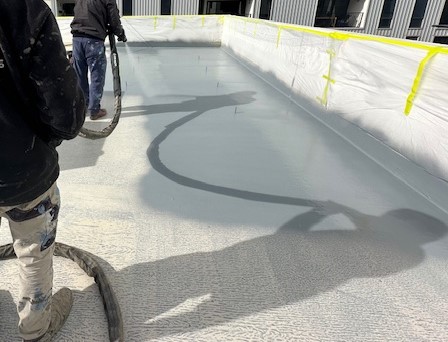Renderfill
A blend of clean, graded quartz silica sands and other fillers that when added, in various ratios, to mixed Civilox resin and hardener, forms a thick, easy to use paste for rendering and patch filling. Concrete substrates often require patch repair and rendering back to the original surface profile prior to the application of a protective coating system. Cementitious renders are often used to achieve this, however, they take far longer to cure than epoxy based renders. In summary, the repair and relining processes are divided into three stages...
- Clean and treat the damaged concrete surface
- Prime the concrete surface using Civilox epoxy and Civilox epoxy render
- Apply Tufflon polyurea to specified thickness
Civilox is a unique epoxy that adheres strongly to damp, cold and difficult substrates. It is also highly resistant to amine blush and bloom even in extreme climatic conditions. Many applicators already use Civilox as their main primer for other coating systems. In order to minimise stockholdings in the field they can simply add Renderfill, in various addition rates, to Civilox to produce any desired consistency. This mix produces an extremely durable and easy to apply render that resists staining and most chemicals.
There are two basic categories of epoxy render: 100% solids epoxy and modified, water-based epoxy. One hundred percent solids epoxy contains no volatile components. Modified epoxies contain water and may be mixed with traditional Portland cement / silica sand to produce a mortar or render. The water and components in these modified epoxy renders are intended to make them easier to apply. However, the water that is added to modified epoxies does not become part of the render — it evaporates as the render cures, potentially leaving microscopic pockets that can trap and collect staining agents. While modified epoxy can have similar chemical resistance as 100% solids epoxy, it can be vulnerable to staining and the voids reduce the strength of the render. Because modified epoxy may contain Portland cement that cures by a reaction with water, it can also be susceptible to shading and uneven coloration in the render joints from uneven hydration.
Use of epoxy render has remained somewhat limited due to higher price points and the common belief that it is more difficult to install than cement renders. But, thanks to recent technical innovations by Liquimix, Civilox epoxy with added Renderfill is now revolutionizing the way 100% solids epoxy renders are being used today. Liquimix has worked with its customers to develop this new generation of epoxy and filler that has the same user-friendly working characteristics of traditional Portland cement renders without their inherent technical limitations. The development of Renderfill lightweight filler when mixed with Civilox, forms a non-slump render or patch repair product that will fill joints and bug holes on vertical surfaces while retaining high adhesion and sealing properties.
LIMITATIONS OF USING EPOXY BASED RENDERS
The main difficulty is that applicators find it difficult to use epoxy renders and therefore revert to cementitious renders. There is no problem using the Civilox epoxy for both the initial priming and the final coat. It is the use of Civilox mixed with standard quartz silica sand that is the most difficult stage of the process to use. Contractors tend to try and avoid this stage and quite often push to change our specification and allow them to use a cementitious based render due to its better Thixotropic properties, ease of application and simple equipment clean up using water. We know from years of experience that epoxy renders adhere more strongly to concrete than cementitious renders and they have the added benefit of minimising pinholes in the application of hot-applied, spray polyurea. Up until recently, current technology has struggled to produce an epoxy render that is affordable, uses product already held in stock (Civilox) and is easy to use and doesn’t slump off vertical surfaces
AN IDEAL CHOICE FOR COMMERCIAL INSTALLATIONS
Another benefit of Civilox epoxy render is that, unlike cementitious renders, it is not sensitive to acidic material found in many foods and cleaning products. Civilox cures equally throughout, it is not subject to hydration and can be over-coated after only 4 hours. Many new commercial projects are being built to “Green Standards” using environmentally sustainable materials. Civilox contains no solvents and is therefore, intrinsically safe.
CIVILOX - TIPS FOR SUCCESSFUL RENDERING AND PATCH REPAIR
When Civilox is mixed with standard quartz silica sand to produce a render, it is typically considered a challenge to install, but many of the most common difficulties can be avoided by following guidelines developed specifically for epoxy render installations, instead of attempting to apply the same techniques used for cement-based render. Unlike cement render, which requires water for mixing, 100% solids epoxy does not require any water or other additives; everything needed for the mix is included by the manufacturer. Epoxy render typically has a shorter working time, and therefore should be applied to smaller areas at a time than cement render. Once epoxy render has been applied, it should not be overworked, so care must be taken to apply it correctly the first time. Epoxies generate heat during their gel stage and so if left in the bucket after mixing this heat will accelerate the curing sequence prematurely and reduce the pot life of the mixed render. To prevent this, pour the entire contents of the bucket onto the floor or a cool surface after mixing. Another method is to spread the Civilox render into small, usable clumps on the floor, which also prevents it from curing prematurely by dissipating the heat that is created when it’s left in concentrated amounts. Civilox has been specially formulated to work well with Renderfill and is easier to use than standard epoxy renders that can be stickier than cement render. Using a special epoxy render float, made of hard rubber instead of soft foam, may help apply the Civilox render into joints. When applying the render into joints, be sure to apply enough pressure to fill the joints completely and remove any excess flush with the surrounding surface.
High-Quality Render Mix and Rendering Mix
RenderFill by Liquimix offers a specialised blend of sands and proprietary fillers designed for addition to Civilox epoxy. This innovative render mix creates a thick, easy-to-use paste ideal for rendering and patch-filling concrete substrates. Whether it's for commercial installations or demanding industrial environments, RenderFill provides a superior solution for your rendering needs.
RenderFill and Civilox Epoxy: A Perfect Combination
RenderFill, when combined with Civilox epoxy, forms an extremely durable and easy-to-apply render. This mix resists staining and most chemicals, making it a reliable choice for various applications, including waterproofing with polyurea coatings and ground stabilisation projects. Civilox epoxy, known for its strong adhesion to damp and difficult substrates, complements RenderFill to create a robust render primer and filler.
Render Primer: Enhancing Surface Preparation
Using Civilox as a render primer ensures a strong bond between the substrate and the final protective coating. This system is particularly effective when applied before polyurea coatings, ensuring a seamless and durable finish. It's an ideal primer for complex projects involving water tank liners or ground stabilisation.
The Benefits of Epoxy-Based Renders
Unlike traditional cementitious renders, epoxy-based renders like RenderFill offer faster curing times and superior adhesion. Our render mix, especially when used as a render filler, minimises pinholes in hot-applied, spray polyurea applications, enhancing the overall quality of the coating.
Overcoming the Challenges of Epoxy Renders with Render Mix
Navigating the world of epoxy renders becomes straightforward with Liquimix's RenderFill. This render mix, in combination with Civilox epoxy, addresses the traditional challenges associated with epoxy renders. The RenderFill rendering mix ensures easy application and adherence to vertical surfaces without slumping. Its versatility as both arender primer and filler makes it perfect for detailed patch repair and comprehensive rendering tasks.
RenderFill: A Sustainable Choice for Commercial Rendering Mix
RenderFill sets itself apart in the commercial sector thanks to its resistance to acidic materials commonly found in foods and cleaning products - a notable advantage over cementitious renders. This characteristic positions RenderFill as an optimal choice for eco-conscious commercial projects. RenderFill and Civilox's solvent-free formula aligns with Green Standards, providing a sustainable and effective rendering mix solution for a variety of commercial applications.
Civilox: Tips for Successful Rendering and Patch Repair
To maximise the effectiveness of Civilox with RenderFill, it's crucial to follow specific guidelines developed for epoxy render installations. This includes managing the shorter working time of epoxy renderings and applying the right techniques for a flawless finish.
For top-quality rendering mix and render primer solutions, choose RenderFill by Liquimix. Our products are designed to meet the demands of various industrial and commercial projects, providing durable, chemical-resistant, and easy-to-apply solutions. Explore our range of render fillers, primers, and related products like expansion joint fillers to find the perfect match for your project needs.
TECHNICAL DOWNLOADS
| Mix ratio | Please refer to the technical data sheet. |
Features
- Cures evenly in about 4 hours
- Can be over-coated with Tufflon after 4 hours or less in some situations
- High adhesion to substrate
- Reduce pinholes in Tufflon
- Resistant to Acids, Alkalis and Solvents
- Increases adhesion of Tufflon to substrate
- Lack of shrinkage










